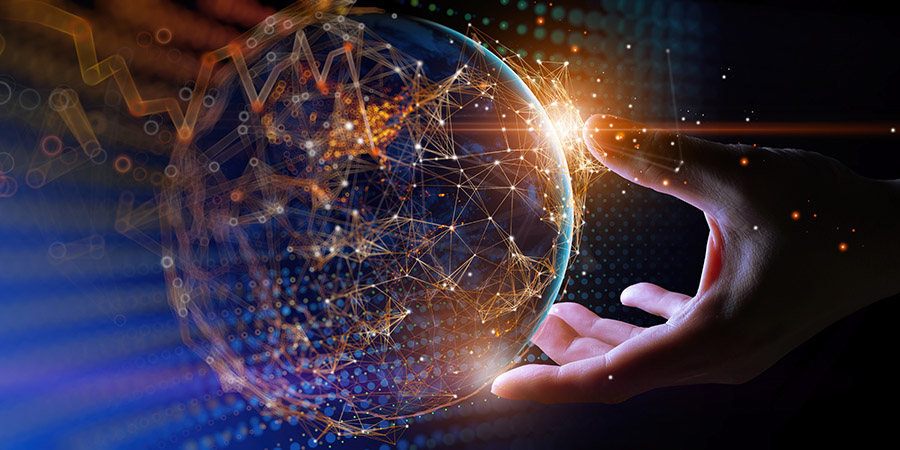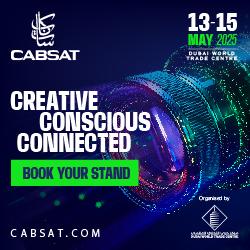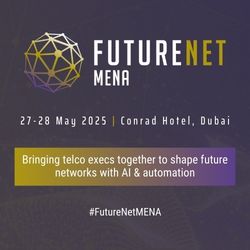In 2030, the digital and physical worlds will seamlessly converge as the way people communicate with each other, communities, nature, and machines will be redefined to form new ways of living, working, and conducting business.
Digital transformation has evolved from a mere ‘buzzword’ into a core strategic element adopted by Arab nations and global stakeholders, consequently driving progress toward a sustainable future. This shift is rooted in fostering a robust economy, a dynamic society, and a forward-looking nation.
2024 in Review: Telecom and ICT’s Radical, Rapid, Resilient Odyssey
The Digital Evolution
Today's interactions have drastically moved away from traditional methods like letters, dial-up phones, and fax machines. The transition to the metaverse is not just a technological change but a sociological one, reshaping how we communicate and connect. In this new era, the metaverse will be defined by the exchange of emotions and facilitated by technologies like virtual and augmented reality (VR/AR), along with brain-computer interfaces. This evolution will introduce new hardware, platforms, and even sensory experiences.
At the core of the data processing and digital transformation journey is network infrastructure. In fact, according to Huawei's Intelligent World 2030 report, healthcare, food, living spaces, transportation, cities, enterprises, energy, and digital trust will be completely revolutionized.
As advancements in cellular technologies, software development, data centers, semiconductors, computing power, and artificial intelligence (AI) continue to evolve, 2030 will become more digital-centric than before.
Hyper-Realistic Tech Experiences
Artificial intelligence, a cornerstone of the digital era, thrives on three critical pillars: data, algorithms, and computing power.
Data serves as the foundational resource, fueling AI systems with vast quantities of information needed for adaptive learning and decision-making. Algorithms act as intellectual engines, transforming raw data into actionable insights through complex mathematical processes. By 2030, general computing power is projected to hit 3.3 zettaFLOPS (ZFLOPS), while AI-specific computing is set to surge to 105 ZFLOPS. This unprecedented growth will drive the annual generation of more than 1 yottabyte of data worldwide. In comparison, if each byte in a yottabyte were a grain of rice, the total grains would fill a large city several times over. The entire internet’s data in 2023 was estimated to be around 120 zettabytes, which is only 0.12 yottabytes.
Over the past decade, the amount of information worldwide has grown exponentially, bringing forth issues such as data privacy, management, access, and affordability. This progress will usher in hyper-realistic experiences that redefine our relationships with technology.
From multi-dimensional, collaborative computing to edge-based solutions, the synergy between AI and infrastructure (driven by data and trained algorithms) will create transformative outcomes for individuals and industries alike.
Also Read: The Battle of Content: Menace or Boon of AI Era?
How the Metaverse Will Reshape Connectivity and Business Operations
From a B2B perspective, the metaverse is already helping organizations unearth efficiencies to save large amounts of money and it is anticipated that, in the future, these benefits will only grow. For example, according to McKinsey, a telecommunications technology company was able to slash both its capital and operating expenses by 10%, thanks to optimizations uncovered by a digital twin of its network infrastructure.
Meanwhile, the metaverse may also enable new forms of AI-enabled customer service, remote surgery using advanced robotics, and fast access to patient records and advanced wearable technology.
In retrospect, Nokia highlighted how the metaverse aims to facilitate new operator business opportunities, targeting both enterprises and consumers. Leslie Shannon, Head of Ecosystem and Trend Scouting at Nokia, shared insights into the connectivity landscape of the metaverse, highlighting the role of virtual reality headsets, which cater to two main groups: enterprises and consumers.
For businesses, a combination of fiber, fixed wireless access (Wi-Fi), and private 5G-enabled wireless networks support immersive experiences.
Meanwhile, consumers will leverage extended reality (XR) through the next generation of mobile devices. According to Shannon, by 2030, we can expect a shift from smartphones to augmented-reality glasses as the primary device for personal connectivity. Aligning with this, studies estimate that more than 30% of businesses will operate and innovate digitally, and there will be one billion augmented reality (AR) and virtual reality (VR) users within this timeline.
Moreover, the physical world of the future will utilize more digital twins to improve the efficiency of product design, product manufacturing, medical analysis, and engineering construction. Despite its potential, the process of mapping the physical world to its digital twin will have to address numerous challenges, such as multidimensional sensing, 3D modeling, and light field data collection and storage.
To better understand the road to achieving digital business success in 2030, Dell Technologies extended IFTF’s forecasts and surveyed 3,800 business leaders from around the world to gauge their predictions and preparedness for the future. Not only are businesses torn by opposing views of the future, they’re also beset by barriers as many aren’t moving fast enough and going deep enough to overcome these obstacles.
A significant percentage of businesses are being held back by a lack of a clear digital vision and strategy, which manifests in several ways, including an absence of ROI data to prove the value of digital transformation and limited senior leadership support. On a similar scale, businesses also face challenges in skills gaps, low employee buy-in, and a workforce culture resistant to change.
Over half are struggling with outdated technology that can’t keep up, along with issues like data overload, privacy concerns, and cybersecurity vulnerabilities. Furthermore, most admit their cybersecurity measures are ineffective and believe their workforce lacks the necessary security awareness.
Expert Insights: TRS-24: Telecom Leaders Discuss Strategy and Execution in ICT
Conclusion
By 2030, the digital world will not just complement reality but redefine how we perceive, interact with, and shape the world around us. It offers boundless opportunities while posing significant challenges that require collective responsibility and innovation.
We are making strides toward a responsible and sustainable digital world, but the pace and scope of progress must be accelerated to meet 2030 goals. Addressing inequalities, enforcing ethical practices, and reducing the environmental impact of digitalization are essential to ensuring that technological advancements benefit all of humanity while preserving the planet.
A shared commitment to sustainability and responsibility will determine whether we achieve this vision.
More Interesting Reads:
Can the Middle East Achieve its Ambitious EV Goals by 2030?
Saudi Arabia's Fintech Boom: Paving the Way for Vision 2030
Digital Solutions Are Building Blocks Toward 2030 UN SDG Goals, Says ITU










